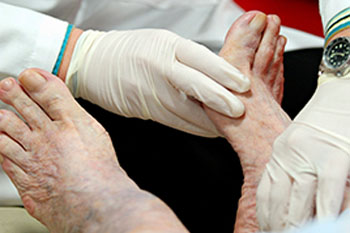
Foot Care for Seniors in Hamilton & Toms River, NJ
Your feet support the weight of your body and carry you through your daily activities throughout your life. Over time, the natural wear and tear that your feet have endured can make certain foot and ankle conditions more common. Older adults may be more prone to problems such as heel pain, ingrown toenails, bunions, corns, and calluses. The fatty pads that cushion the bottoms of the feet can break down, leading to foot pain while walking or standing. Systemic conditions like diabetes or poor circulation also become more common with age and can affect the feet.
Essential Foot Care Tips for Older Adults
For an older adult, having a daily foot care routine becomes increasingly important. Washing the feet daily, drying them thoroughly, and moisturizing are some of the key components of maintaining good foot hygiene, which can help prevent infections and dry, cracked heels. Wearing socks and comfortable, wider shoes with good cushioning and arch support or orthotic inserts can protect your feet from injury and reduce discomfort. Caring for your toenails by trimming them straight across regularly can prevent ingrown toenails. Inspecting your feet daily for any irregularities, such as discoloration, unusual sensations, cuts, scrapes, sores, or bruises is suggested to catch any problems early and treat them before they worsen.
For more information about caring for elderly feet, please consult with a podiatrist.
